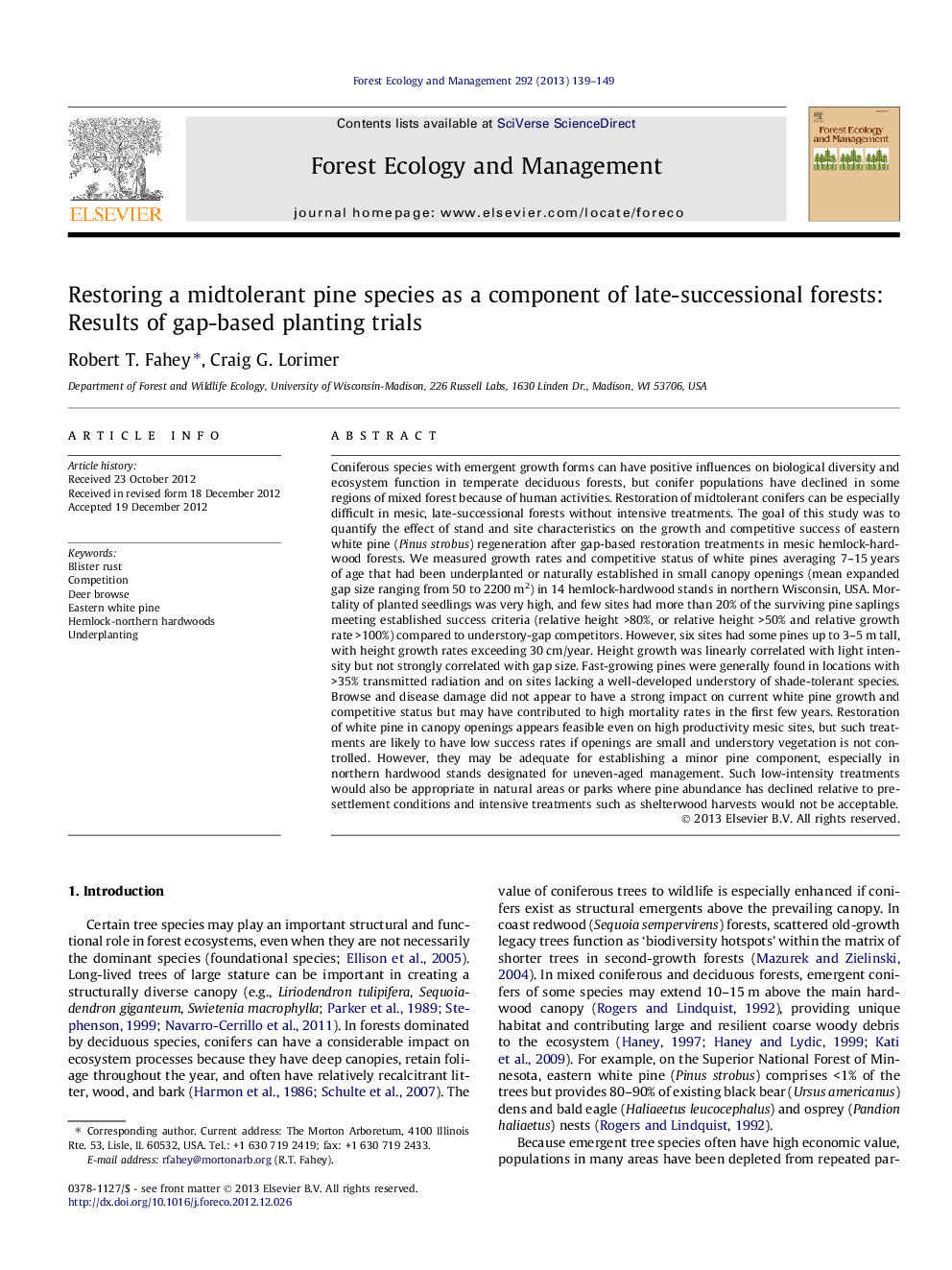| کد مقاله | کد نشریه | سال انتشار | مقاله انگلیسی | نسخه تمام متن |
|---|---|---|---|---|
| 87120 | 159232 | 2013 | 11 صفحه PDF | دانلود رایگان |

Coniferous species with emergent growth forms can have positive influences on biological diversity and ecosystem function in temperate deciduous forests, but conifer populations have declined in some regions of mixed forest because of human activities. Restoration of midtolerant conifers can be especially difficult in mesic, late-successional forests without intensive treatments. The goal of this study was to quantify the effect of stand and site characteristics on the growth and competitive success of eastern white pine (Pinus strobus) regeneration after gap-based restoration treatments in mesic hemlock-hardwood forests. We measured growth rates and competitive status of white pines averaging 7–15 years of age that had been underplanted or naturally established in small canopy openings (mean expanded gap size ranging from 50 to 2200 m2) in 14 hemlock-hardwood stands in northern Wisconsin, USA. Mortality of planted seedlings was very high, and few sites had more than 20% of the surviving pine saplings meeting established success criteria (relative height >80%, or relative height >50% and relative growth rate >100%) compared to understory-gap competitors. However, six sites had some pines up to 3–5 m tall, with height growth rates exceeding 30 cm/year. Height growth was linearly correlated with light intensity but not strongly correlated with gap size. Fast-growing pines were generally found in locations with >35% transmitted radiation and on sites lacking a well-developed understory of shade-tolerant species. Browse and disease damage did not appear to have a strong impact on current white pine growth and competitive status but may have contributed to high mortality rates in the first few years. Restoration of white pine in canopy openings appears feasible even on high productivity mesic sites, but such treatments are likely to have low success rates if openings are small and understory vegetation is not controlled. However, they may be adequate for establishing a minor pine component, especially in northern hardwood stands designated for uneven-aged management. Such low-intensity treatments would also be appropriate in natural areas or parks where pine abundance has declined relative to presettlement conditions and intensive treatments such as shelterwood harvests would not be acceptable.
► We evaluated competitive success of white pine planted in gaps in mature hardwoods.
► Mortality of seedlings was high with few saplings meeting success criteria.
► Height growth was correlated with light intensity but not strongly with gap size.
► Successful pines were generally found in locations with >35% transmitted radiation.
► Restoration of white pine as a minor component in mesic hardwoods appears feasible.
Journal: Forest Ecology and Management - Volume 292, 15 March 2013, Pages 139–149